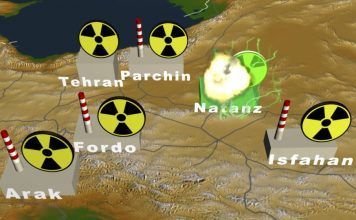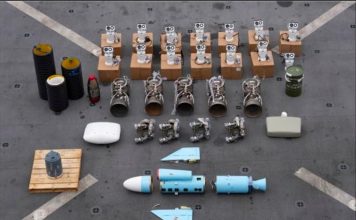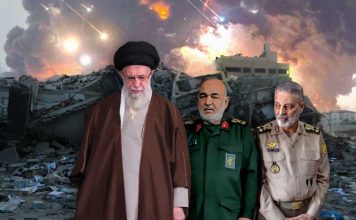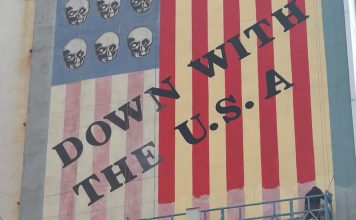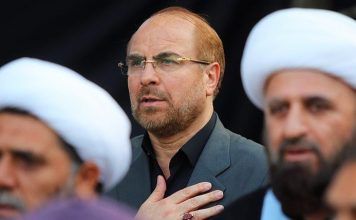By Kayhan Life Staff
President Ebrahim Raisi’s government established the “Headquarters for Eradicating Absolute Poverty” in 2022.
Yet almost a year later, the number of Iranians forced into poverty continues to increase.
In comments reported by the Tehran-based Didban-e Iran news agency on March 6, 2022, President Raisi said: “We cannot neglect the poor segment of our society even for a moment.”
“Eradicating absolute poverty is our priority. I have asked Mr. [Morteza] Bakhtiari [the head of Imam Khomeini Relief Foundation] to tackle abject poverty,” he added.
According to official figures, some 60 million people, or 75 percent of the country’s population, lived below the poverty line in March 2022.
A Ministry of Cooperatives, Labor, and Social Welfare report in 2019 said 26 million people lived in abject poverty in Iran.
The rial’s devaluation and hyperinflation are the principal reasons for increased poverty in Iran.
[aesop_image img=”https://kayhanlife.com/wp-content/uploads/2021/12/2021-11-29T105220Z_1595456791_RC2A4R9JJ4YW_RTRMADP_3_IRAN-NUCLEAR-scaled.jpg” panorama=”off” credit=”People walk at a street in Tehran, Iran, November 29, 2021. FILE PHOTO/REUTERS./” align=”center” lightbox=”off” captionsrc=”custom” captionposition=”left” revealfx=”off” overlay_revealfx=”off”]
While prices of goods continue to rise, consumers’ purchasing power decreases. As a result, many households cannot afford to buy life’s necessities.
According to a recent report by the Tehran-based Statistical Center of Iran (SCI), the inflation rate in the country reached a record high of 51.3 percent in January.
The SCI report calculated the annual inflation rates for various income deciles and the market basket by comparing the price increase of food products against the rising prices of all goods.
Income deciles show the average income for different income groups in society.
According to the SCI calculation, the inflation rate for the poorest Iranian households (first decile) rose to 53.2 in January and climbed to 43.7 percent for the wealthy segment of the population (tenth decile.)
The data shows that rising inflation hits the poorest population segment the hardest.
Writing on the Tehran-based Eco Iran news website on March 6, Mehdi Feizi, an assistant professor of economics at the Ferdowsi University of Mashhad, said: “Economic stagnation in recent years and the high uncertainty of the Iranian economy has increased the vulnerability of inflation inequality.”
“Ignoring the problem of inflation inequality is detrimental to our understanding of the dynamics of poverty, income inequality, and the effectiveness of fiscal policies,” Mr. Feizi warned.
“Understanding the specific impacts of monetary policies on various regions of the country shows policymakers that setting policies based on the average indicators, such as inflation — when the variance is significant — not only does not have a positive effect but, in extreme cases (for instance, the underprivileged classes), worsens the situation of the indicators, even if the general conditions have improved,” Feizi noted.
Many Iranian working-class people live below the poverty line, sparking widespread strikes and protests in recent years.
Workers at the Gachsaran Petrochemical Company, in the southwestern province of Kohgiluyeh and Boyer-Ahmad, went on strike on March 16, demanding their unpaid wages for the past two months and a safer work environment.
According to labor sources, poverty, high cost of living, unpaid wages, dismissals, a lack of job security, an unsafe work environment, and corrupt contractors have been the main reasons for strikes and protests by workers in the oil, gas, and petrochemical industries in recent months.
As poverty becomes more widespread in Iran, fewer people can afford a house.
A report by the Islamic Republic of Iran Central Bank said housing prices in Tehran rose by 2.5 percent in July 2022 compared to the previous month, reaching a record $800 square meters.
Vali Esmaili, deputy chair of the Majlis (Iranian Parliament) Social Commission, recently said that starting in June 2023, workers will receive $12 in housing benefits. A worker must wait nearly six years before he can afford one square meter of home and 250 years before buying a 40-square meter house.
Speaking at the first meeting of the “Capital’s Housing Think Tank Group” on March 7, Mehdi Hedayat, the managing director of Tehran Renewal Organization, said: “The demand for housing in Tehran and other major cities is a real issue. There are 200,000 unstable structures in Tehran; each one can be converted into five housing units. We will build one million affordable housing units to make Tehran safe.”
“Some 50 percent of Tehran’s population are tenants,” Mr. Hedayat noted. “Many people living on the north side are forced to move to the south side. The middle class is moving out of the city. Rising house prices have forced people to live outside the city.”
“In the private sector, people who have paid for their houses in advance must wait up to 10 years before the construction of the building is finished,” He explained. “Housing industry needs investment, but there is no secure platform for selling the homes, which has prompted the housing trade based on square meters in the commonalities market.”
Some economists and state media have warned the government that increased poverty will trigger more protests and strikes in the country.
“Unfortunately, the economic crisis has weakened people’s religious and revolutionary beliefs and even destroyed them,” the hardline Tehran-based Kayhan said on March 7. “The Islamic Republic will face severe danger if the trend continues.”
“It is unacceptable to have such poverty in a wealthy country like Iran and witness the national currency decline so much that people cannot even afford basic life necessities,” the paper added.



